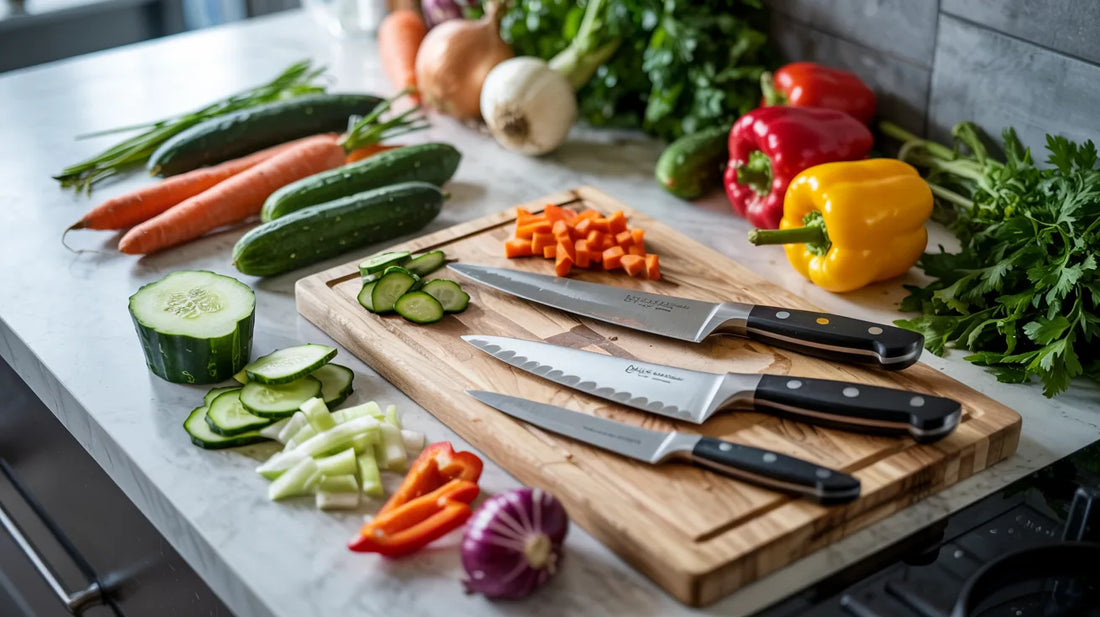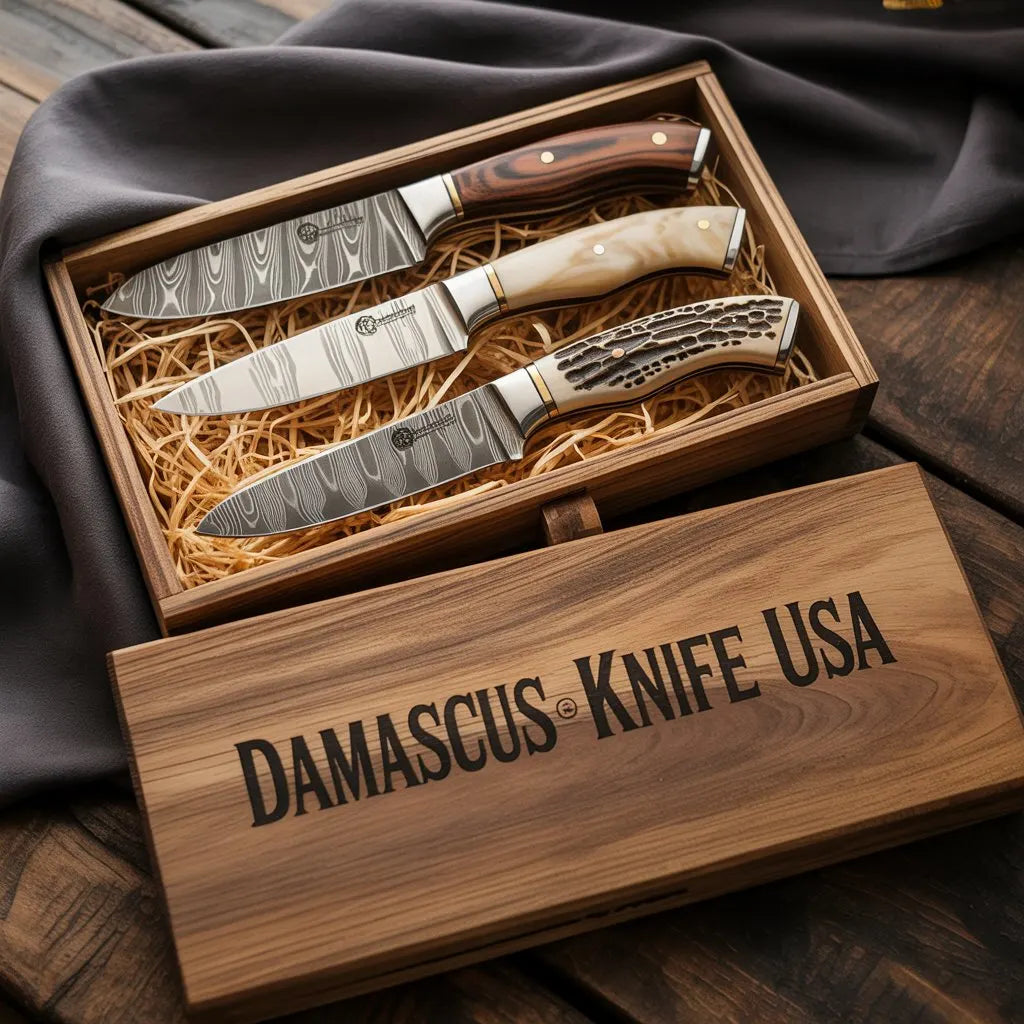Mastering essential knife work transforms how every home cook and professional chef approaches cooking. When you understand basic cutting techniques and handle your knife correctly, the entire process becomes easier, faster, and significantly safer.
Proper knife cuts directly impact your finished product in three important ways. First and foremost, uniform cuts ensure even cooking times, preventing scenarios where certain pieces burn while others remain undercooked. Moreover, precise techniques improve food presentation, elevating simple dishes to resemble those found in a restaurant. Third, fundamental cuts help refine your skill in blending flavors creatively – smaller cuts release more surface area for seasonings.
This thorough guide seeks to offer insights into key kitchen knife cutting terms and cooking terminology. Whether you are an aspiring home cook or an experienced professional, getting acquainted with different techniques can be incredibly beneficial. We’ll offer an easy-to-follow guide designed to boost your skills and help you approach new recipes with confidence.
In the following sections, you'll discover safety tips, knife recommendations, and clear, step-by-step techniques. Improving your cutting techniques will enhance your culinary abilities and significantly boost the quality of every meal you create.
The Significance of Mastering Knife Skills
Developing strong cutting skills lays a firm foundation that revolutionizes your entire cooking experience. When you invest time in learning correct knife handling, four transformative benefits emerge in your kitchen.
- Accident prevention becomes second nature. Controlled, deliberate cuts dramatically reduce kitchen injuries compared to haphazard chopping with poor blade control. Your hands remain safe when you establish proper grip and cutting rhythm.
- Kitchen efficiency skyrockets instantly. Expert cooks work at lightning speed because their blade movements flow seamlessly between tasks. After mastering fundamental cutting methods, preparation time shrinks dramatically, allowing more energy for actual cooking instead of battling stubborn ingredients.
- Cooking consistency becomes effortless. Even-sized pieces ensure uniform heat distribution, eliminating the frustration of overcooked edges and undercooked centers. This reliability delivers superior texture, balanced seasoning, and exceptional results with every meal.
- Presentation quality soars to professional levels. Precise, intentional cuts transform basic ingredients into visually striking components. Simple home dishes gain sophisticated appearance when every element reflects careful knife work and attention to detail.
These advantages interconnect beautifully, elevating everyday cooking into something remarkable. Each benefit amplifies the others, establishing a culinary foundation that's secure, efficient, dependable, and aesthetically impressive.
Types of Kitchen Knives
Selecting the right tools for each job revolutionizes your cooking journey. Japanese knives are crafted for specific purposes, providing remarkable precision. Below, explore the essential all-purpose shapes and sizes that are crucial for every home kitchen.
-
Serrated Knife: The Perfect Tool for Slicing Bread
-
Paring Knife: The Epitome of Precision Control
-
Chef's Knife: The Ultimate Culinary Workhorse
-
Utility Knife: Perfect Size Balance
-
Santoku Knife: The Master of Three Functions
Selecting a knife that is appropriately sized and shaped for your particular ingredients will make your prep work smoother and enhance your efficiency.
Essential Knife Cuts for Every Kitchen
By mastering fundamental cutting techniques, you can elevate your culinary skills from novice to expert. These knife cuts form the backbone for uniform cooking and stunning presentation.
-
Julienne: Slicing Vegetables into Matchstick Shapes
-
Mincing: Extremely Fine Chopping
-
Dicing: How to Make Perfect Cubes
-
Chopping: The Straightforward Foundation
-
Rondelle: Simple Circular Slices
-
Chiffonade: Shaping Leafy Greens into Ribbons
-
Brunoise: The Smallest Precision Work
-
Batonnet: The Thick Little Stick
-
Tournée: The French Method for Shaped Vegetables
-
Slicing: An Easy Cutting Method
-
Cube: Creating Even Cube-Shaped Pieces
-
Paysanne: Rustic Country Style Cuts
Perfecting Your Knife Control and Safety
Mastering proper knife technique elevates cutting from risky attempts into skilled craftsmanship. These essential methods ensure safety while achieving precision results in your kitchen.
-
The Claw Grip: Essential Finger Protection
-
The Pinch Grip: Enhance Your Blade Control
-
Rocking Motion: Effortless Cutting Flow
-
Push vs. Pull Cuts: Technique for Various Food Types
The Importance of a Sharp Knife
A sharp knife ensures precision and safety in cooking. While some individuals may feel apprehensive about using a sharp knife, a dull one requires more force and carries a higher risk of slipping and causing accidents. An adequately sharpened knife should cut smoothly and cleanly. To keep Japanese knives at their best, they should be regularly honed on a whetstone.
Critical Knife Safety Errors to Steer Clear Of
By avoiding these typical mistakes, you can elevate your cutting skills from clumsy to skilled. These mistakes can damage your equipment and threaten safety in the kitchen.
- Incorrect Knife Choice: Selecting wrong knives for particular tasks decreases efficiency and heightens injury risk. Pair your knife with the cutting task for best results.
- Wrong Hand Position: Gripping knives improperly causes poor control and potential accidents. Professional technique demands correct hand placement during the cutting process.
- Inappropriate Cutting Board Choice: Opt for a soft rubber, synthetic, or end grain wood cutting board to prolong the sharpness of your knife. Steer clear of bamboo, hard plastic, or glass cutting boards, as they present excessive resistance and may harm the finely sharpened edge of a Japanese knife. Choose sanitizable cutting boards that are suitable for both home and professional settings.
- Blunt Blade Problems: Using dull knives requires greater force and increases the risk of slipping. A sharp edge cuts cleanly while dull blades tear and slip unpredictably.
- Wobbly Work Surface: Cutting boards that move during use create dangerous conditions. Always secure your work surface before starting any cutting task.
These basic errors offer the greatest chances for enhancement. We suggest purchasing quality equipment that enables safe, efficient cutting techniques.
Developing Professional Knife Skills Through Strategic Practice
Mastering knife techniques demands a thoughtful progression that builds competence while reducing errors. Begin your training with simple tasks before tackling advanced cutting methods.
- Start with Gentle Vegetables: Begin practicing on zucchini and cucumber. These accommodating vegetables let you concentrate on hand positioning and movement without battling rigid resistance. Their tender texture makes errors less obvious while you establish proper form.
- Advance to Tougher Ingredients: Slowly transition to firmer vegetables like onions, carrots, and potatoes. These demand greater force and precision, challenging your growing abilities while developing power and accuracy.
- Study Expert Techniques: Watch instructional videos and study how seasoned chefs manipulate their knives. Observe their finger placement, cutting tempo, and methods. Copy their actions during your individual training periods.
- Choose Superior Tools: Buy quality knives and care for them correctly. Sharp, balanced instruments make practice simpler and more secure. Blunt or inferior knives encourage poor habits and heighten accident potential.
- Emphasize Uniformity: Practice creating identical pieces for balanced cooking outcomes. Matching dimensions guarantee ingredients finish simultaneously, enhancing your completed meals while strengthening correct form through consistent repetition.
Elevating Your Culinary Skills: Investment in Quality Tools
Achieve precision cuts with high-quality, handmade kitchen knives that revolutionize your cooking journey. Proper knife technique establishes the cornerstone of efficient food preparation.
Along with a high-quality sharp knife, a key way to maintain organization in the kitchen is to arrange your workstation like a professional. Preparing all your ingredients, or 'mise en place,' beforehand will enhance your cooking efficiency and streamline the process. Premium Japanese chef knives, paired with organizational tools like bowls and containers, enable you to prepare food as efficiently as possible. We offer a diverse selection of products designed for particular uses, such as preparation tools in our stainless mise en place collection. Select a size that matches the number of ingredients you typically use. The right knives and prep tools can elevate your skills from basic chopping to professional-grade precision.
Ready to enhance your kitchen setup? Explore our handmade knife collection and see how expert-grade tools convert routine cooking into culinary excellence.


